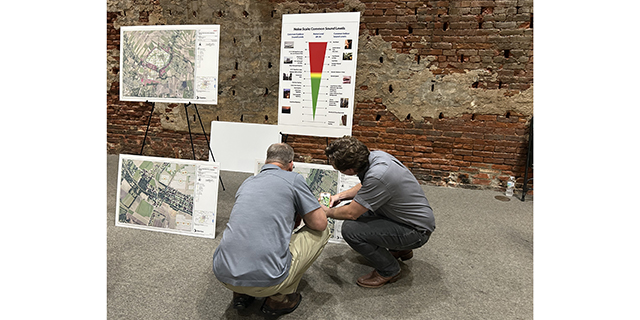Blue-winged teal numbers high before start of the special season in Louisiana
Published 7:30 am Sunday, September 20, 2020

- Blue-winged teal numbers were way up in the Sportsman’s Paradise before the start of the special teal season on Sept. 12, according to the state’s waterfowl study biologist. Most of them were located in the agricultural lands of southwest Louisiana.
BATON ROUGE — The estimated number of blue-winged teal in southwest Louisiana before the Sept. 12 start of the special teal season was approximately 45 percent higher than the 10-year average of 139,000 for the same period in September.
Larry Reynolds, Louisiana’s veteran waterfowl study leader, and his staff conducted an aerial waterfowl population survey in the Coastal Zone on Sept. 8-9. They counted an estimated 202,000 blue-winged teal in southwest Louisiana, the vast majority of them in agricultural fields due to the recent passage of Hurricane Laura.
Reynolds reported that marsh habitat in the region was impacted heavily by the hurricane because of high water, blocked drainage from extensive debris and vegetation damage caused by storm surge and salinity.
“We saw virtually no blue-winged teal and very few waterfowl of any species in the marsh along established transects,” the state Department of Wildlife and Fisheries waterfowl biologist noted in his report after the flights.
However, he wrote, one potential positive in the storm’s aftermath was the noticeable absence of invasive aquatics in the marsh south of White Lake, west of Louisiana 27, north of Rockefeller Refuge and in the intermediate marsh north of Grand Chenier. Apparently, wind, storm surge and saltwater intrusion reduced water hyacinth and giant salvinia to the point they saw “virtually none” from the area in those areas.
Also encouraging was the fact flocks of blue-wings were seen in many rice fields, including southwest of Gueydan, south of Jennings and the largest concentration just north of the transect line (thus excluded from the survey) west of Crowley. And, he wrote, while there was “above average” shallow flooding in the agricultural region, outside of the marsh, extensive flooding wasn’t visible.
The overall number of blue-winged teal in the state’s Coastal Zone was nearly twice as much as last year’s estimated of 127,000 and four times the 59,000 estimated in 2018. The 236,000 blue-winged teal counted along and just above the coast in the southwest and southeast regions also was 55 percent higher than the five-year average of 152,000 and slightly higher than the long-term average of 227,000.
Also, blue-winged teal estimates in the two lower regions of the state were well above last year’s estimate of 110,000 and 12,000, respectively, and the estimated 18,000 blue-winged teal counted at Catahoula Lake on Sept. 8 was the highest since they saw an estimated 49,000 blue-wings in 2010.
Southeast Louisiana’s blue-winged teal numbers — estimated at 16,000, considerably lower than the southwest region — still were 33 percent higher than the 10-year average of 12,000. The birds were counted in only three of 10 transects and there were no large concentrations, according to Reynolds, and most of them were located in the marsh east of Venice.
He noted habitat near the mouth of the Mississippi River appears improved over last year with notable submerged aquatic vegetation, larger stands of delta duck potato and broad expanses of southern wild rice despite some signs of mild vegetation damage due to elevated water levels and salinity.
The bad news for southeast Louisiana is there is more water hyacinth spread in the upper Terrebonne marshes, Caernarvon freshwater diversion and other areas of the region.
One other duck species was seen during the flights. Reynolds reported there were an estimated 31,000 mottled ducks in the Coastal Zone, just over twice the number of 15,000 in 2019 and 19 percent above the 10-year average. The number also was the highest September estimate since 2019 when an estimated 49,000 mottled ducks were counted along coastal Louisiana.
He also wrote that 77 percent of mottled ducks in southwest Louisiana were seen in agricultural habitats and in fewer, larger groups than usual during surveys this time of year.





